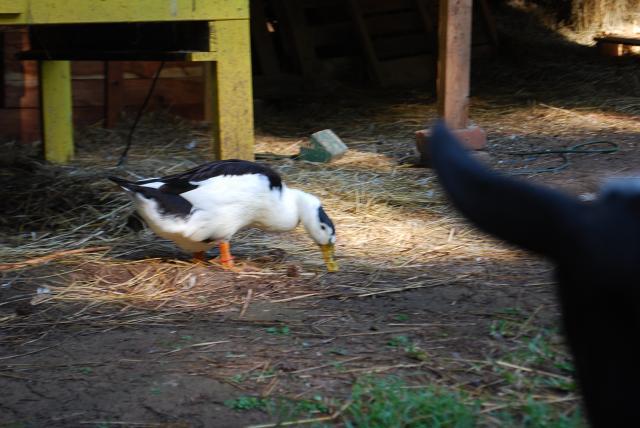- Mar 21, 2009
- 2,229
- 49
- 219
Quote:
There is not much (anything really) that you can do to stop getting birds that occasionally look like Magpies. It is just the nature of the genotype. As far as Blue goes, it is incompletely dominant, so you will virtually always see it if the bird carries it. If your drake is Blue and some of your ducks are Black, you will get some Black offspring as well (which won't carry Blue). Black to Blue breeding will end up in visually 50% Black and 50% Blue offspring. Blue to Blue will result in 25% Black, 50% Blue, and 25% Silver. If only your hens carry Brown (which is sex-linked recessive and combined with Black results in Chocolate), then you won't have any Chocolate offspring unless one of your drakes carries the sex-linked recessive Brown (d/d). Unlike with hens, it is possible for a drake to carry this (the brown) and not show it in its' outward appearance (phenotype). So from the Blue to Chocolate breeding, you should end up with again 50% Black and 50% Blue presuming the drake doesn't carry brown. A lot of Anconas do though seem to carry brown, so it is certainly possibly you might get some Chocolates even from Black or Blue drake to Chocolate hen (certainly by the second generation if you keep drake offspring from the Chocolate hens). You could also get Lavenders in the second generation if you breed from two birds that both carry Blue and the drake Brown. .
There is not much (anything really) that you can do to stop getting birds that occasionally look like Magpies. It is just the nature of the genotype. As far as Blue goes, it is incompletely dominant, so you will virtually always see it if the bird carries it. If your drake is Blue and some of your ducks are Black, you will get some Black offspring as well (which won't carry Blue). Black to Blue breeding will end up in visually 50% Black and 50% Blue offspring. Blue to Blue will result in 25% Black, 50% Blue, and 25% Silver. If only your hens carry Brown (which is sex-linked recessive and combined with Black results in Chocolate), then you won't have any Chocolate offspring unless one of your drakes carries the sex-linked recessive Brown (d/d). Unlike with hens, it is possible for a drake to carry this (the brown) and not show it in its' outward appearance (phenotype). So from the Blue to Chocolate breeding, you should end up with again 50% Black and 50% Blue presuming the drake doesn't carry brown. A lot of Anconas do though seem to carry brown, so it is certainly possibly you might get some Chocolates even from Black or Blue drake to Chocolate hen (certainly by the second generation if you keep drake offspring from the Chocolate hens). You could also get Lavenders in the second generation if you breed from two birds that both carry Blue and the drake Brown. .
Last edited:






